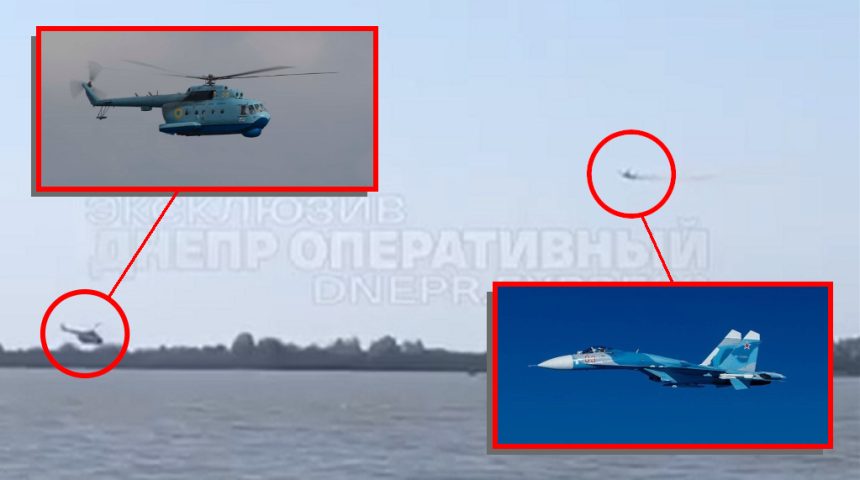The video shows the fighter unsuccessfully firing its gun at the helicopter, which however was later reportedly shot down off-camera with an air-to-air missile.
A short video recently made the rounds on Telegram, showing what should be a Sukhoi Su-27/30/35 fighter jet engaging with its GSh-30-1 30 mm cannon at a helicopter, which is identified in the description accompanying the video as Mi-14PS helicopter of the Ukrainian Navy. The helicopter is flying few meters above the water, in an attempt to evade the Flanker as it starts a dive and fire a burst of 30 mm round, which however miss their target.
The video cuts off as the fighter goes around for another attack and the unknown bystander moves to cover after hearing the cannon burst. According to the caption of the video, the Flanker then performed another attack run, shooting down the helicopter with a R-73 Archer IR-guided air-to-air missile. The video is said to have been recorded on May 7, 2022 in the Odessa Oblast.
This is reportedly video of a Russian fighter attempting to shoot down a Ukrainian Mi-14 helicopter in Odesa Oblast. The Russian source claims the helicopter was shot down with an R-73 air-to-air missile on the next pass.https://t.co/OsSmfMqVJQhttps://t.co/5wkBucElDW pic.twitter.com/UQ8Oyz9x9o
— Rob Lee (@RALee85) June 7, 2022
This last piece of info is interesting as, on the same day, both Ukrainian and Russian sources confirmed the death of the Deputy Commander of the Ukrainian Navy, Colonel Ihor Bedzay, as he was flying a Mi-14PS helicopter which was shot down by an air-to-air missile fired by a Russian fighter jet. Considering this info, it is possible that the helicopter in the video is Colonel Bedzay’s Mi-14, just seconds from being shot down.
Attacking a low flying helicopter is always a tricky maneuver for a fighter jet. In fact, a low and slow target, such a transport helicopter, forces a much faster aircraft, like a fighter jet, to voluntarily fly towards the ground at sustained speed in order to acquire the target and engage with guns at close range, as the surrounding terrain might confuse the IR sensors of short-range air-to-air missiles.
Colonel Bedzay was best known for his former assignment in the Ukrainian Navy, as commander of the 10th Naval Aviation Brigade based in Novofedorivka, Crimea. During the Russian invasion of Crimea in 2014, Col. Bedzay directed the relocation of Ukrainian Naval Aviation assets to the mainland before they could be seized by the Russians.
“In 2014, Colonel Bezday was one of, if not the only, member of the entire fleet command who demonstrated leadership and determination. While everyone was waiting for the mythical orders coming from Kyiv, he organized personnel and prepared the equipment,” said Taras Chmut of the Come Back Alive NGO. ” In front of the invaders, he moved all the working aircraft to mainland Ukraine. And the next day, he did the same thing with what could not fly out the first day.”









